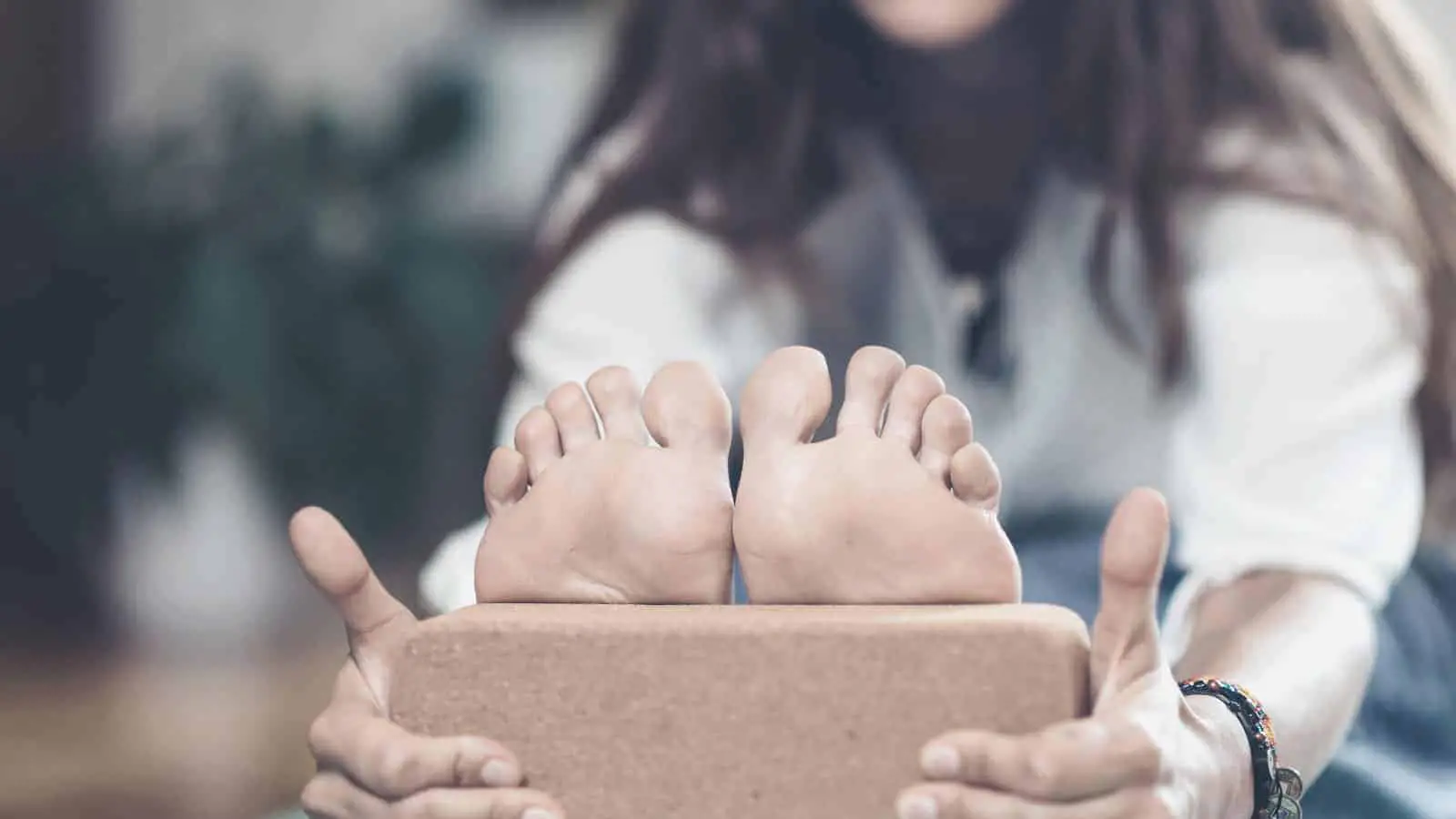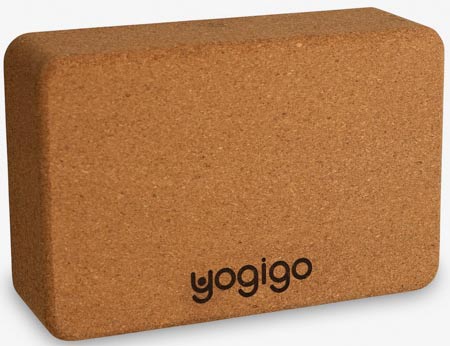Sometimes you may need just a little more than a yoga mat to practice yoga. There are additional tools that you can use that may assist and improve your yoga practice. One of these essential tools is the yoga blocks. You’d be amazed at how useful and helpful this yoga prop can be when you are practicing yoga at a yoga studio or on your own at home. Yoga blocks can help you with the alignment, variations and in certain yoga poses where flexibility is limited.
The typical yoga block is made out of a highly dense material and is a 7.5 cm x 15.24 cm x 22.8 cm shaped brick and they also come in various sizes and textures. If you are looking for a more eco-friendly product, then you may want to get a yoga block made out of cork. These durable yoga props can make a challenging yoga pose more accessible.
If you have injuries or any physical limitations, a cork yoga block can offer great support in your daily yoga practice. This article will talk about how to use a yoga block in your practice and in which yoga poses a yoga block can help with the alignments or modifications.
Yoga blocks in Standing Forward Fold, Uttanasana
A common pose in yoga is a Standing Forward Fold. Some flexible yogis can easily bend and touch the floor or their toes, but what if you’re a yoga beginner or do not have the greatest flexibility in your hamstrings? That’s when a yoga blocks comes into play. Placing a block (or two yoga blocks) at the base of your yoga mat can become a replacement of your feet or floor. When turned to the appropriate height (one block will offer three different levels), a forward fold becomes a much easier pose to attempt. You won’t have to bend as far because your block changes the range of motion you will need to achieve to support your posture.
Seated Forward Bend, Paschimottanasana
What if you’re VERY flexible yogi? A yoga block can take your asana to a deeper level. In a Seated Forward Bend, one is also reaching for the toes. For the highly flexible yogi, though, this may be a relatively easy posture; they can touch their toes (or even the bottom of their feet) with no significant problem. To go deeper, place a yoga block at the soles of the feet. Doing so essentially makes one taller, so the yogi must fold deeper and reach farther to their “toes” thereby creating more length not only in their legs, but also in their back.
Yoga blocks can also be used to stabilize the body in certain yoga positions. For example, while practicing Bridge Pose, a backbend posture, sometimes the legs may splay open creating less stability in the hips and low back. For proper alignment and integrity of the pose, the practitioner should plant the feet firmly into the yoga mat and gently squeeze their inner thighs toward each other. Holding onto a block between the thighs creates a solid and structurally sound posture. It reminds the yogi to keep the feet flat on the mat and by squeezing the block, it engages the muscles in the low back, core, and inner thighs to assist in stabilizing the entire body in the yoga pose.
Yoga blocks in Revolved chair Pose, Parivrtta Utkatasana
In a similar fashion, while attempting a Twisted Chair Pose, squeezing a yoga block between the thighs creates stability and alignment in the hips. Ideally, the hips and pelvis are squared off when moving into a upper body rotation. As a result, one gains more flexibility, mobility, and strength in the abdominal system (particularly the obliques). And, again, it reminds the practitioner to maintain support in the hips.
Yoga blocks in Tree Pose, Vrikshasana
This is probably one of the first balancing yoga poses you’ll encounter in a yoga class. It requires focus, balance, and strength while you balance on one foot. The other foot is placed on the inside of the standing leg. If this is a challenge, try using a block! Place the block at the appropriate height on the floor. Keep one foot firmly grounded into your yoga mat. Prop the other foot on top of the yoga block. This is a great way to ease into balancing on one foot. As you gain the required stability, you’ll need the block less.
Yoga blocks in Warrior Three, Virabhadrasana III
This is another yoga pose that has you standing on one foot, but this time the other leg is extended behind you and your upper body is parallel to the floor with your arms extended out in front of you. (It looks like you’re flying through the air like Superman!) Again, significant balance and strength is needed for a pose like this. Bring in the yoga blocks. Place it at the base of your mat and when you step into this balancing pose, rather than extended your arms out in front of you, try placing one hand (or even both hands) on the block to help your balance. Think of the yoga block as an assistant to your stabilizing muscles in your body. As your body becomes accustomed to the challenging pose, you’ll need the block less and less.
Yoga blocks in Crow Pose, Bakasana
This is an arm balancing yoga posture that has the yogi literally balancing on their hands. It’s not quite a handstand, but it does require core strength, focus, and balance. In this yoga posture, your hands are on the floor with elbows bent. Your knees rest on top of the bent arms (the triceps act as a shelf for your knees) and your feet lift off the floor. It may be challenging at your first attempt of this posture to get both feet off the floor. Here is where your yoga block comes in. Before placing your hands on the floor, step both feet onto a block and crouch down; then place your hands flat on the mat. As you lean forward and balance your bent knees onto your bent arms, you can keep your toes on the block. Because of the height of the block, it lifts your body in a way that assists the balancing component of the posture.
Yoga blocks can also help with balancing poses, of which there are a great variety. Having a yoga block nearby can help you gain the strength in your balancing postures that you’ve been hoping for. How many times have you tried standing on one foot and have toppled over in frustration? Here are a few poses in which a yoga block can help.
Closing thoughts
This list can go on and on in the ways your yoga blocks can assist your yoga practice, but in this article we wanted to give you the example how yoga blocks can assist in few yoga poses. Rather than seeing the yoga block as something that makes your yoga practice more difficult, think of it as an extension of your own body; an assistant that will help you develop the strength, stability, and flexibility that comes with the benefit of the yoga practice.









